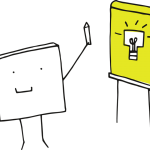In June 2019, Vancouver welcomed close to 8,000 advocates, researchers, policy makers and global leaders from over 160 countries gathered at the 2019 Women Deliver Conference. This is the world’s largest gathering of women right’s advocates. This year, the conference theme was around power and how it can drive — or hinder — progress and change.
If we think about the progress that was made with regards to gender equality and women in positions of power, the numbers, particularly for North America, are quite bitter. Consider just these three facts.
- First, neither the US nor Canada has ever elected a female national leader — although Kim Campbell was Prime Minister for roughly six months after Brian Mulroney retired from politics.
- Secondly, a woman working full time in the US makes 80.7 cents [in Canada, 75 cents] for every dollar a man working full time earns and these numbers are even lower for Indigenous and racialized women.
- Finally, while in 2019, the Fortune 500 reported the highest number of female CEOs ever, but it is still at pint sized 6.6 per cent of the group — I find the headlines celebrating this ‘achievement’ painful at least.
So, while seeing the many young and confident female delegates of Women Deliver Conference on the streets of beautiful Vancouver made my heart cheer, a nosy thought kept breaking through; after all the efforts in the US from Title VII of the Civil Rights Act of 1964 [a labor law in the United States that prohibited discrimination in hiring, promotion, etc.] to the Lilly Ledbetter Fair Pay Act [the first bill signed into law by President Barack Obama 10 years ago], we are still celebrating the milestone of 6.6 per cent women making it to the top corporate executives in Fortune 500 companies.
Diversity, Doing the Right Thing and ROI
While the link between diversity in the workplace and company performance is not as straightforward as some argue, a number of studies have demonstrated that cultural and gender diversity improves profitability, decision-making and innovation, while inclusive workplaces improve employee engagement.
If equity and/or performance arguments were not compelling enough, consider only the #MeToo cultural shift taking the world by storm in 2017 and questioning the “normality” of toxic masculine workplace cultures. Then comes the global #TimesUp movement raising global awareness on gender inequality in workplaces. Both have sparkled not only a public debate, but multiple lawsuits and public relations nightmares for multi-billion dollar companies across the globe.
A Step in the Right Direction
So, what can companies do to address gender inequality and increase diversity in the workplace?
The most common go-to solution for corporations to address organizational diversity and inclusion issues is to provide diversity training. For example, in September of 2018, following the aftermath of #TimesUp, American Express Co. has introduced training for managers aimed to help them build more inclusive teams and support women/minorities’ participation in meetings (i.e. what to do when they are interrupted or when their ideas are not being acknowledged).
In the same year, and in response to high profile harassment and pay discrimination cases, Nike also introduced company-wide, unconscious bias training “providing additional mandatory training for 10,000 managers.” Most recently, both Starbucks and Sephora closed their stores across the US for diversity training to address stereotype-driven incidents with their customers.
It is not my intention to claim that companies only offer diversity training exclusively as a public relations gig. There are organizations around the world that have been proactive in their organization-wide diversity and inclusion efforts, including offering diversity training to their staff/managers for years. Over 60 of such Canadian employers have been recognized as Canada’s Best Diversity Employers.
However, diversity training is not cheap. Only in the US, companies are spending 8 billion dollars on diversity training annually. So, if corporations spent that much money on diversity training, it should work, shouldn’t it?
The answer is not as straightforward as you might think. In fact, Frank Dobbin and Alexandra Kalev, sociologists who have studied organizational diversity for decades, have identified diversity training as “likely the most expensive, and least effective, diversity program around.”
Does Diversity Training Really Work?
There are different forms of diversity training that vary from raising awareness to skill-based training models. Study after study we learn that while diversity training might be somewhat successful in raising awareness of prejudice, it rarely has long-term, sustainable effects and is highly ineffective in changing behaviours.
In fact, Frank Dobbin and Alexandra Kalev, sociologists who have studied organizational diversity for decades, have identified diversity training as “likely the most expensive, and least effective, diversity program around.” Unfortunately, most diversity training simply does not work, works conditionally or, in cases with mandatory training, might even have negative, opposite effects from what it was intended to achieve.
Why Diversity Training Can Fail
- Diversity fatigue: Diversity training is a not new sensation. Corporations, public institutions and NGOs have been conducting some sort of educational diversity training for over half a century. The first prototypes of diversity training programs in the US were designed in response to a number of discrimination suits filed with the US Equal Employment Opportunity Commission (EEOC) in the late 1960s. Speaking about the fatigue from diversity training, a 2016 Economist article paraphrased what President Ronald Reagan once said: “The nine most terrifying words in the English language are, ‘I’m from the government and I’m here to help’.” Today they run a close second behind 12 words: “I’m from human resources and I’m here to organize a diversity workshop.”
- Try NOT thinking about elephants: As human beings, we are prone to resist anything that is reactive, mandatory and/or framed around restrictions and consequences. My favourite example to illustrate this phenomenon is by above-mentioned Dobbin and Kalev: “Try NOT thinking about elephants. Diversity training typically encourages people to recognize and fight the stereotypes they hold, and this may simply be counter-productive.”
- Time commitment: Decades of research have shown that short-term educational interventions do not make a difference in people’s behaviours; yet, most diversity training is a couple of hours long. Think about safety training for a construction worker. Companies would like their employees not only be aware of hazards but know what to do in hazardous situations and master desired behaviors by practicing concrete skills, correct? Will two hours suffice?
What Makes Diversity Training Work
I am not going to list examples of diversity training programs that have worked. Exactly the same training that has worked for one organization might not do a thing for another, even when both companies have the same training goals and are comparable in terms of their size/sector. There are many hypotheses for why selected diversity training programs work. Yet, I believe, there is one key factor that contributes to the success of a diversity program in any organization.
What makes diversity training a symbolic act in one company and a step in the right direction in another is each company’s commitment to diversity and inclusion. In isolation, diversity training does not make any difference at all, but its effectiveness increases when it becomes a part of a larger organizational strategy aimed to create inclusive work environment.
True commitment does not start from the diversity and inclusion statement on a company’s website or a mandatory two-hour awareness training. True commitment starts from the top [think leading-by-example] and goes beyond executives showing up for the first 15-minutes of training and never mentioning diversity and inclusion for the rest of the year. A CEO who allocates time to mentor a minority student shows the level of organizational commitment more than all the speeches about diversity and inclusion they could have given to staff.
True commitment to diversity and inclusion is honest, transparent, goal-oriented and data-driven. It shows up in hiring processes, performance reviews and is linked to overarching strategic objectives of the organization. True commitment enacts change in the culture of organization and requires resources.
A Change in Perspective
Organizations that are serious about attracting top talent have another big factor to consider. The composition of talent pipes is changing. By 2025, over 75 per cent of the workforce will be Millennials. Over 50 percent of Millennials look for diversity and inclusion practices in their prospective employers when considering a new job and nine-out-of-ten would rather take a pay cut than work for an employer who does not share their values. As a result, they are not only increasing the importance of diversity initiatives in the workplace, but bringing new perspectives about what diversity, belonging and inclusion really mean.
Staying on top of these trends and creating a culture of true inclusion will attract top talent and bring a competitive advantage to an organization. Diversity training, most likely, will play only a small part in this cultural shift.
___________________
This article first appeared in the CPHR’s online publication PeopleTalk on June 18, 2019.
#diversitytraining #diversity #diversityandinclusion #training #genderdiversity #culturaldiversity #workplaces #healthyworkplaces #womenleaders #leadershipmatters #workplaceculture


















